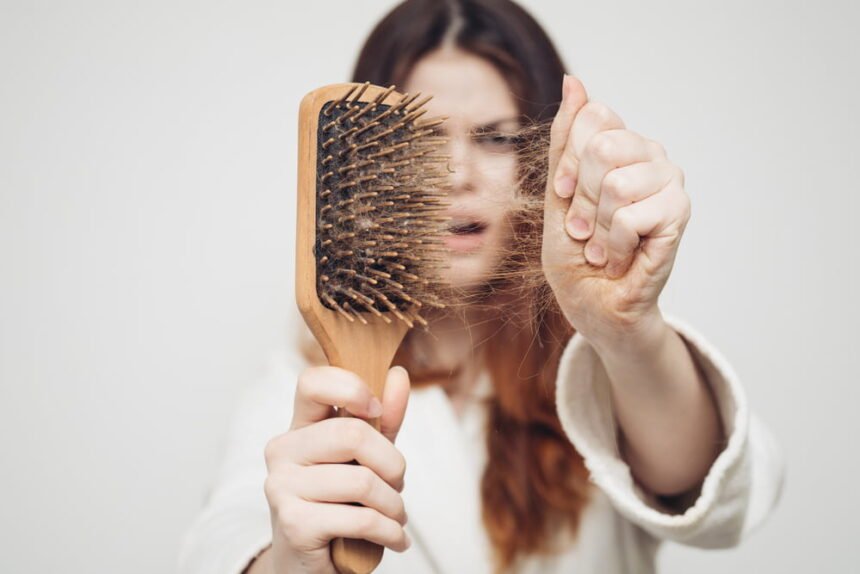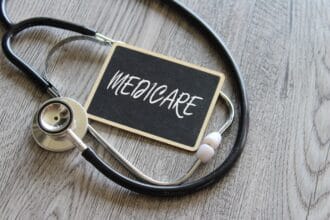Losing 50-100 hairs a day is completely normal, but what do you do if you’re experiencing more hair fall than the normal range?
Hair loss can be devastating at any age. Nobody wants to see or feel bald patches on their scalp. Fortunately, there are a plethora of hair treatments available to remedy most, if not all, types of hair loss.
Hormonal Hair Loss
Fluctuations and imbalances in hormones can affect anyone at any time of their life. Hormonal imbalances can also contribute to hair fall. It is important to identify the root cause of the hormonal imbalance, because this will lead to the correct path of hair loss treatment.
Natural fluctuations in hormone production can be brought on by pregnancy, childbirth, and breastfeeding. Symptoms of hair fall occur well up to a year after giving birth. Postpartum hair fall can continue longer depending on if and how long the mother and child decide to breastfeed. While breastfeeding, a mother continues to produce certain hormones and extract vitamins from her body so that the breast milk she produces contains the necessary nutrients to nourish her baby.
Postpartum hair loss is a normal side effect of the body reregulating its hormone levels. A nutritious diet combined with prenatal/postnatal vitamins should aid in the faster recovery of postpartum hair loss. However, if hair fall lasts more than a year postpartum, then it may be related to improper thyroid function.
Hypothyroidism is when the thyroid does not produce enough crucial hormones that allow the body to function properly. Oftentimes, a blood panel that tests TSH and/or the hormone thyroxine will be taken to diagnose thyroid malfunction. Treatment for hypothyroidism usually consists of a prescription of the synthetic thyroid hormone, levothyroxine.
Before submitting to any test, your doctor must know if you are taking any other medications or supplements. Certain medications and supplements can compromise your test and give invalid results. For example, biotin is a common supplement used for hair treatment of hair loss; however, excess biotin in the bloodstream can interfere with blood tests by reflecting higher or lower than normal levels leading doctors to misdiagnose conditions.
It is important to consult with a doctor about your particular symptoms for the appropriate tests and hair treatment to mitigate any further hair loss.
Genetics and hair loss
Genetic predisposition and sensitivity to the male sex hormone dihydrotestosterone (DHT) result in male pattern baldness, or androgenic alopecia. Androgenic alopecia can also affect women. Fortunately, there are hair treatments a person suffering from male pattern baldness can implement to stave off the hair fall.
- Minoxidil (also known as Rogaine): a topical treatment that stimulates hair growth at an alarmingly quick rate. Requires continued use to remain effective.
- Prescription medication: Finasteride and dutasteride, taken in pill form, essentially alter 5 alpha reductase (an enzyme that converts testosterone and causes hair loss in men) which slows the rate of hair fall and allows hair to grow back. Requires continued use to remain effective.
- Microneedling with PRP: involves a pen-shaped device affixed with tiny, sterilized needles puncturing the skin followed by a topical or injection of plasma rich platelets to stimulate hair growth. Requires multiple treatments depending on the extent and duration of hair loss.
- Red light therapy: exposure to red light therapy has been shown to stimulate hair growth
Effective hair treatment of male pattern baldness relies heavily on how soon prevention methods begin. The longer a hair follicle remains dormant may result in its ultimate death and reviving it may be near impossible without extreme (or costly) measures. Therefore, it is imperative that any of the above methods are employed before too much time passes and the hair follicle dies.
Hair loss caused by vitamin deficiency
Although the most common supplement advertised for hair treatment is biotin, biotin deficiency is hardly ever the culprit behind excessive hair fall. The top four vitamin deficiencies related to hair loss are:
- Iron: otherwise known as anemia, iron deficiency can be attributed to brittle nails, cold hands and feet, fatigue, headaches, and dizziness
- Selenium: deficiencies in selenium usually go hand in hand with a malfunctioning thyroid
- Vitamin D: one of the most common deficiencies that presents itself with a myriad of other symptoms such as fatigue, muscle weakness, and depression
- Zinc: zinc deficiency can also inhibit growth/maturation and impair immune function
A blood panel is used to diagnose the above vitamin deficiencies in accompaniment of their common symptoms. Hair loss alone will not give a medical professional enough information to provide appropriate hair treatment.
Most vitamin deficiencies can be remedied by a well balanced, nutritious diet. According to the National Institute of Health, “Brazil nuts, seafood, and organ meats are the richest food sources of selenium.” Beans, pumpkin seeds, and chicken breasts are a good source for zinc. Foods high in Iron include, but are not limited to, dark leafy greens, lean beef, and whole grain bread. Vitamin D is probably the most difficult vitamin to get naturally from food, which is why it is often recommended by doctors to take a quality supplement to ensure that you are obtaining the right amount for your body.
Cancer treatment induced hair fall
Unfortunately, one of the main side effects of enduring cancer treatments is hair loss. Regardless of whether a person is undergoing chemotherapy or radiation, the purpose of cancer treatments is to prevent the spread and eliminate cancerous cells.
Our bodies are designed to prioritize health over aesthetics, which means that hair serves less purpose than any of our functional organs. Therefore, the body designates energy to maintain functions of the rest of the body at the expense of growing hair.
Once cancer treatments have come to an end is usually when the patient can expect their hair fall to cease. Hair growth should return three to six months post treatment. However, cancer survivors can speed up the process by using Minoxidil.
Hair loss from Alopecia
The most common and treatable forms of Alopecia are Alopecia Areata and traction Alopecia. Hair fall from Alopecia Areata is an autoimmune response resulting in the immune system mistakenly attacking itself. Prescription strength topical steroid treatments can stimulate hair growth, but should be used sparingly due to the steroid’s side effect of thinning the skin after prolonged use.
Hair fall due to traction alopecia is easier to treat, because it simply requires less pulling of the hair follicle. A person must choose to wear their hair in loose hairstyles and forgo tight buns, braids, or any other hairstyle that might cause too much tension on their scalp.
Proper hair care as hair treatment
The way we care for our hair has a direct impact on the health of our hair follicles. This can range from hair products we lay on our scalp to the tension we create when pulling hair back into a bun. Taking the time to consider the ingredients in hair styling products might improve the lifespan of hair follicles and reduce hair breakage as well.
Common hair practices that might be contributing to hair fall:
- Heat styling tools: excessive use of heat styling tools without using a heat protectant can lead to hair damage and perceived hair fall due to breakage.
- Hair perms/relaxers: repeated application of the chemicals used for perming or relaxing hair can cause irritation to the scalp and weaken the hair resulting in hair loss.
- Hair dye/bleach: exposure to the chemicals used for dying or bleaching hair can have the same effects as perms/relaxers.
In order to prevent hair fall due to the above hair practices, it is important to prioritize hair health over aesthetics. There are heatless hair styling techniques available to use in place of repeatedly exposing hair to heat styling tools. Ensure the products being used are quality products and the hairdresser is experienced in the application process. Temporary hair dyes also tend to be less damaging than permanent hair color dye.
Stress induced hair fall
One of the side effects of living in the modern world is the chronic stress that accompanies. Stress has the ability to prematurely age a person and interrupt multiple processes within the body– one being hair growth. According to the Mayo Clinic, chronic stress can force hair follicles into the resting phase. The more time that hair follicles remain dormant, the likelihood that hair fall results in permanent hair loss.
Hair treatments for stress induced hair fall relies heavily on decreasing the stressors in your life. It is important to identify what is causing you stress and ways you can reduce it even by a little bit. Leading an otherwise healthy lifestyle and implementing any of the aforementioned hair treatment solutions are all for naught if you continue to endure chronic stress.
Therefore, take care in identifying the root cause of your hair loss and take the appropriate steps to rebuild your health so that you can begin to regrow your luscious locks.










